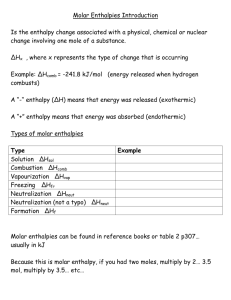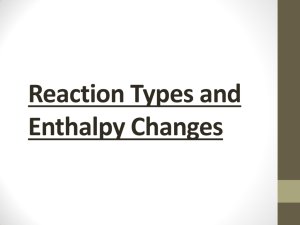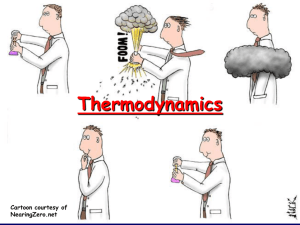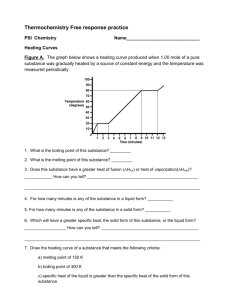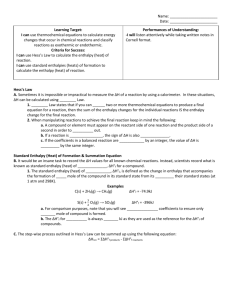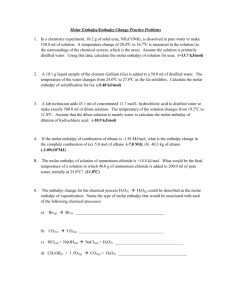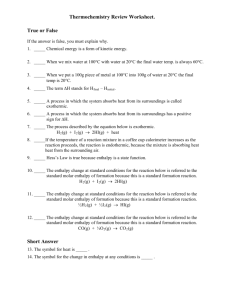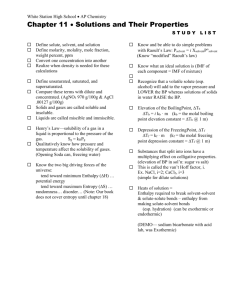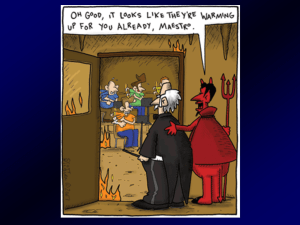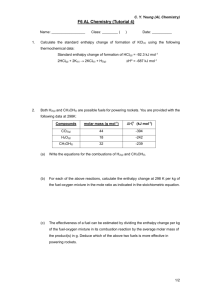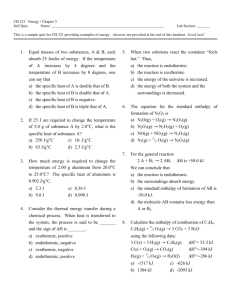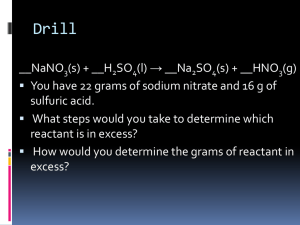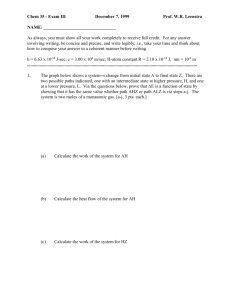4 Ways To Represent Enthalpy Changes
advertisement
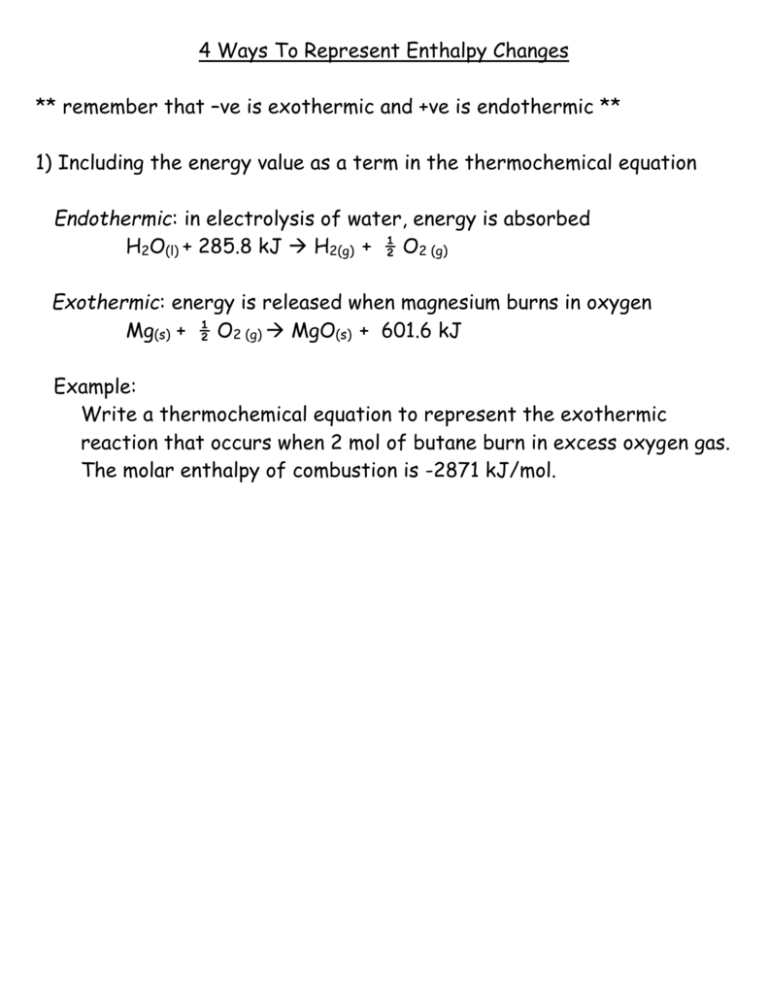
4 Ways To Represent Enthalpy Changes ** remember that –ve is exothermic and +ve is endothermic ** 1) Including the energy value as a term in the thermochemical equation Endothermic: in electrolysis of water, energy is absorbed H2O(l) + 285.8 kJ H2(g) + ½ O2 (g) Exothermic: energy is released when magnesium burns in oxygen Mg(s) + ½ O2 (g) MgO(s) + 601.6 kJ Example: Write a thermochemical equation to represent the exothermic reaction that occurs when 2 mol of butane burn in excess oxygen gas. The molar enthalpy of combustion is -2871 kJ/mol. 2) a) Writing a balanced chemical equation and stating its enthalpy change beside it *make sure that ΔH has the correct symbol CO(g) + H2(g) CH3OH (l) ΔH = -128.6 kJ Notice that these are written in kJ not kJ/mol … this is because the moles have already been taken into account with the given equation. Example: Sulfur dioxide and oxygen react to form sulfur trioxide. The molar enthalpy for the combustion of sulfur dioxide, ΔHcomb, in this reaction is 98.9kJ/mol SO2. What is the enthalpy change for this reaction? b) Stating the molar enthalpy of a specific reaction -Where one mole of a particular reactant or product is specified. CO(g) + H2(g) CH3OH (l) ΔHf = -128.6 kJ/mol CH3OH Example: Write an equation whose enthalpy change is the molar enthalpy of reaction of calcium with hydrochloric acid to produce hydrogen gas and calcium chloride solution. 3) Drawing a chemical potential energy diagram to represent the energy transferred in a reaction Potential energy: stored in the relative positions of particles and in the bonds between them. Examples:


